This overview on oesophageal cancer (esophageal cancer) and associated articles will hopefully give you everything you need to know to help you increase your personal odds of beating oesophagael cancer - the symptoms, causes, and all the latest treatments alternatives to help you improve your personal odds of survival.
Oesphageal Cancer overview
Oesophageal cancer, or esophageal cancer, starts in the oesophagus, a tube of muscular tissue between the troat and the stomach. The oesophagus has two different types of cells and so there are two different types of cancer - Esophageal Adenocarcinoma Cancer or EAC; and Esophageal Squamous Cell Carcinoma, or ESCC.
Oesophagael cancer is growing rapidly in the UK and is very dangerous. In America it is about 1% of all cancers with approximately 17,000 cases a year. 15,600 of those ultimately die from the disease. There are definitely commonalities with Stomach cancer (Gastro-intestinal, or gastric cancer) and you should take a look at those pages as well.
The oesophagus is also called the Gullet and is about 12 inches long.
The main type of oesophageal cancer in the Western world is adenocarcinoma. A precursor to this may be Barrett's oesophagus, which is the formation of abnormal cells at the lower end of the oesophagus. These abnormal cells are most usually caused by splash back or acid reflux or GERD, where the liquid mixture of foods and enzymes and acid splash up from the stomach. About 1 per cent of UK adults have Barrett's. And about 1 in 100 cases of Barrett's may eventually become oesophagael cancer.
In South East Asia the esophageal cancer is more likely to be squamous cell carcinoma.
Oesophageal cancer is more prevalent in older men, especially those who smoke and drink (spirits mainly).
Oesophageal cancer symptoms
You may experience the following early warning symptoms:
As the disease progresses, so do the signs:
Oesophageal cancer causes
There are a number of factors that are linked with an increased risk of oesophageal cancer:
1. Being older, and being male doesn't help!
2. Smoking is a major risk factor for oesophageal cancer, probably because it alters oral bacteria colonies. This is true for both forms of esophageal cancer, and the risk does not seem to go away evem when the smoker stops.
3. Alcohol is also a major risk, more of the squamous cancer (ESCC) than the Adenocarcinoma form. Alcohol and smoking have a mutiplier effect.
4. Gastro Esophageal Reflux Disease, or GERD - a mix of strong enzymes and food from the stomach can re-enter the gullet and this reflux can cause heartburn or pains in the chest. People who have GERD are more likely to develop adenocarcinoma (EAC) in the lower part of the oesophagus, especially where the reflux is more frequent. GERD is more likely to cause Barrett's esophagus which in turn is linked to a higher risk of EAC. Barrett's is where the acid reflux causes squamous cells to turn into gland cells (cells which are more common in the stomach).
5. Hereditary factors make some people more likely to develop polyps in their stomach, which may increase risk.
6. Certain health disorders like pernicious anaemia, gastritis and other irritable stomach problems are often blamed. But the real issue is "Is there something underlying these various causes?"
What causes these inflammations and irritations in the first place? What makes these problems more acute? What irritates the situation further, or are they enough on their own to turn into cancer?
 Want to receive the very latest, hot information on this subject? Click here
Want to receive the very latest, hot information on this subject? Click here
(i) Prescription Drugs: taking drugs long-term can be devastating: We dealt with a lady patient at CANCERactive who had been prescribed the drug Diclofenac sodium (a non-steroidal anti-inflammatory drug) for over ten years, when the directive for the drug on the Pharmaceutical company's own Website clearly states it should not be prescribed for more than 6 months.
(ii) Proton Pump Inhibitors: can have a devastating effect on the stomach. Designed to reduce acid reflux but often given with chemotherapy to avoid the patient being sick, PPIs have been shown to triple the risk of stomach cancer if taken occasionally, produce a 5-fold increase if taken for a year, and an 8-fold increase if taken for 3 years. This research was conducted for stomach cancer and the study has not been extended to oesophageal cancer or throat cancer yet.
Go to: PPIs, acid reflux pills, cause stomach cancer
(iii) Environmental toxins: may also be a cause. Exposure to dry cleaning solvents is linked to a higher risk. Reports (for example, from the European Cancer Centre, IARC, in Lyon) talk about nitrates, nitrites and nitrosamines being causal. One report stated: Scientists from 19 countries, at the International Agency for Research on Cancer in Lyon (IARC) have concluded that high nitrite levels (especially in conjunction with low vitamin C levels) are linked to carcinogenicity. Links with stomach cancer, oesophageal cancer and brain tumours were especially noted. The working group were especially concerned with the run-off of fertilisers into surface and well water. Nitrites and nitrates may have a direct cancer effect or promote the by-products of cyanobacteria in the soil and water. By-products such as microcystins and nodularins are cyclic peptides and are toxins produced when the bacteria die.
(iv) Bacterial Infection - In Cancer Watch pages over the last 15 years we have covered a number of worldwide research studies on possible causes/contributory factors: Your body holds a finely balanced group of bacteria called a Microbiome. We know from the major $178 million research study - The Human Microbiome Project - that your microbiota become imbalanced, losing 'good' bacteria allowing pathogens to increase, and then cancer forms. Your microbiome has 90 trillion bacteria to your 7 trillion cells; and it has 75,000 genes to your 25,000. It makes three times the number of proteins, enzymes and messages than you do. Its micro-RNA can trump your micro-RNA.
Bacteria from your mouth and from your stomach but not necessarily from your gut have been linked to this cancer.
-
For example, a healthy oesophagus seems to contain high levels of the species Firmicutes and Streptococcus viridans.
-
NYU Langone Healths Perlmutter Cancer Center has shown there are at least two types of bacteria in the mouth that are linked with a higher risk of oesophageal cancer. EAC was linked to the presence of Tannerella forsythia and ESCC was linked to an 'abundance' of orphyromonas gingivalis.
-
However,
Streptococcus and
Neisseria were two strains linked to reduced risk - interestingly,
Neiisseria is involved in the breakdown of the toxins from cigarette smoking. Non-smokers had much higher levels of the bacterium and a greater protection.
Go to: Oral bacteria link to oesophageal cancer
-
In one study by Sawada et al
(1), E coli was found in much higher numbers in Oesophageal adenocarcinoma, EAC.
E coli has also been found in Crohn's and colorectal cancer, and even in breast cancer tissue. You can read more about gut bacteria in several articles on this Website.
Start here: All cancer begins in the gut
-
-
Of the 6-14% of patients with Gastroesophageal Reflux Disease, or GERD, who subsequently develop Barrett's oesophagus, about 0.5 - 1% will develop adenocarcinoma. Campylobacter are found in greater numbers in GERD. See - Blackett et al(2). Campylobacter can be treated by the Chinese herb artemisinin or sweet wormwood.
-
Research shows HPV is found at higher levels than normal in people with oesophageal squamous cell cancer (ESCC).
-
Helicobacter pylori has lived in the bodies of humans for hundreds of thousands of years. The CDC states that two thirds of the World's population co-exists with the bacterium. However, we know that Helicobacter Pylori in the stomach contributes to stomach ulcers and even to some stomach cancer. But it's not that simple. H. pylori contributes to non-cardia gastric cancer, but not to gastric cardia cancer. Acid levels and lactobacillus acidophilus can keep Helicobacter pylori in check, as can the herb goldenseal taken with Bismuth (e.g. in Gastrobismol). It can also be killed off by Para Free Plus - go here.
-
Experts are still arguing whether the effects of Helicobacter pylori extend to causing GERD.
-
When it comes to
H. pylori and oesophageal cancer, many experts thought the two were linked. But now epidemiology studies suggest the opposite might be true. In a
meta-study of 19 studies, lowered
H. pylori levels were linked with increased levels of oesophageal cancer. The hypothesis is that with our more sanitised Western lifestyles we have now lowered infection levels of
H. pylori but increased numbers of cases of esophageal cancer. However, life's never easy. It looks like there are two forms of
H. pylori. The one with a tail might cause cancer!
- Antibiotics and drugs like Ramipril can also lower levels of Firmicutes in the body. There have also been research reports saying that people with esophageal cancer have low vitamin B-12 levels, or low folic acid levels and well they might: A lack of beneficial bacteria in the gut will reduce production levels of certain B vitamins.
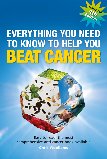
This book has been a best seller in the UK for more than a decade Click here to buy
Oesophageal cancer diagnosis
Professor Gareth Williams and Dr Kai Stoeber of UCLs Wolfsen Institute have developed a test using fluid samples from the oesophagus and is 85 per cent accurate for the specific diagnosis of Oesophagael cancer. This is much needed as at the moment the testing is for general signs of non-specific cancer, and the cancer is rarely caught at an early stage resulting in only 8 per cent 5-year survival figures. When diagnosis catches the cancer early, and chemotherapy and radiotherapy are used, claims of 80 per cent 5-year survival are made.
The usual diagnosis is made in one of three ways:
Barium meal more a swallow than a meal. This white, chalky liquid is swallowed and X-rays taken to track the trouble spots
Endoscopy where a tube with a light and a camera on the end is passed down the throat. A local anaesthetic will be used more uncomfortable than painful. The cameras image shows up on a TV monitor. A few sample cells may be taken at the same time for analysis under a microscope this is called a biopsy.
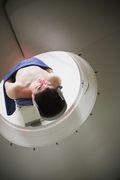 A CT scan - You lie on your back and go into a chamber. The scan takes about 10 minutes and involves multi-dimensional X-rays giving a 3D picture to pin point tumours and to obtain a bigger picture about possible spread to nearby tissues. You may be given an injection probably containing iodine to better show up the hot spots in your stomach. If so the doctor must discuss your possible allergy to iodine.
A CT scan - You lie on your back and go into a chamber. The scan takes about 10 minutes and involves multi-dimensional X-rays giving a 3D picture to pin point tumours and to obtain a bigger picture about possible spread to nearby tissues. You may be given an injection probably containing iodine to better show up the hot spots in your stomach. If so the doctor must discuss your possible allergy to iodine.
The Doctors will then tell you whether it is Upper, Middle or Lower oesophagael cancer, to describe location
They will tell you the Stage or how far it has progressed. Stage 1 is no spread whereas Stage 4 means there is spread beyond the oesophagus to other organs.
And they will tell you the Grade or how aggressive it is. Grade 1 is a slow growing cancer, while Grade 4 is the fastest.
Oesophageal cancer treatment
Cancers are very individual, and so is the treatment programme. It may depend upon the location of the tumour, its spread and your health amongst other factors.
1. 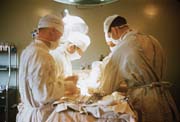 Surgery: This is the most common treatment. Cuts may be made in the abdomen, chest and/or neck. It is important to be clear just how much tissue is to be removed and what the implications are afterwards: for example, for swallowing and eating. Quite frequently the upper part of the stomach may be removed too, plus the adjacent lymph nodes. Surgery cannot always be used due to size and location of the tumour or to your personal health. Sometimes the tumour grows around nerves, which can be both painful and surgery limiting. However, it is the most common treatment for this cancer.
Surgery: This is the most common treatment. Cuts may be made in the abdomen, chest and/or neck. It is important to be clear just how much tissue is to be removed and what the implications are afterwards: for example, for swallowing and eating. Quite frequently the upper part of the stomach may be removed too, plus the adjacent lymph nodes. Surgery cannot always be used due to size and location of the tumour or to your personal health. Sometimes the tumour grows around nerves, which can be both painful and surgery limiting. However, it is the most common treatment for this cancer.
In an Ivor Lewis esphagectomy, two incisions are made, one in the stomach, the other in the chest wall. The tumour, lymph nodes, lower oesophagus and upper stomach may be removed, and the remaining parts re-joined.
A list of questions to use as a basic guide is contained in Everything you need to know to help you beat cancer.
Three forms of surgery are used:
An oesophagectomy: for early stage cancers - where the affected parts and the nearby lymph nodes are removed, and the remaining oesophagus is reconnected to the stomach so you can still swallow.
An oesophagogastrectomy: where there is a need to remove part of the stomach too, along with nearby lymph nodes. The remaining oesophagus is reattached to the remaining stomach so food can continue to pass from the throat to the stomach. Sometimes a piece of your own colon is used to connect the oesophagus to the stomach.
Laser Surgery: is used in the USA to attack blockages. Using a version of the Endoscope along with a laser beam, portions of a tumour causing a blockage can be removed, avoiding the need for external cuts.
2. Radiotherapy: This may be external radiotherapy, where treatment is given every weekday for between 3 and 6 weeks. You should read our articles on Radiotherapy especially a quick guide on how to maximize the effectiveness.
Sometimes internal radiotherapy is used where radioactive materials (put in place by an endoscope or a similar tube) rest in the tumour area. The side effects are the usual ones for radiotherapy including nausea, lowered blood cell count, and possible hair loss. Radiotherapy is usually used where the surgeon is uncertain that he cleared away all the cancer cells.
3. Chemotherapy: This may be used before surgery to reduce the size of the tumour and make it more manageable.

More usually it is given after surgery
a) To kill off all remaining cancer cells to try to prevent return of the cancer
b) To treat any spread of the cancer to other tissues
Typically capecitabine, cisplatin, 5-FU, and Docetaxel are used.
Herceptin (Trastuzumab) is increasingly used where people have Human Epidermal Growth Factor expressed. Ramucirumab is another monoclonal antibody that may also be used with paclitaxel.
You can go to our A-Z of Cancer drugs to read a patient-friendly and objective view of these drugs.
4. Immunotherapy - Pembrolizumab (Keytruda) is approved for use in the USA.
Complementary, Integrative and Alternative Oesophageal cancer treatments
1. Eat a Rainbow Diet
There can be little doubt that eating the Colourful Mediterranean Diet, especially after a Roswell Park detailed report 'Foods that help fight Esophageal cancer' on the factors shown in research to help cause or fight esophageal cancer.
There is also research on cranberries inhibiting esophageal cancer in vitro and in vivo
Go to: The ideal diet
It is important to incorporate a low fat diet. We know that generally high blood fat levels increase cancer spread; and we know that a low fat diet restricts esophageal cancer.
2. Look into off-label drugs
Drugs originally launched to treat other illnesses and which have been used successfully with limited side-effects, may well do a job with esophageal cancer.
For example, atorvastatin is used by some oncologists to reduce blood fat levels and restrict cancer spreading - lycopene would be a natural alternative.
Metformin is used to cut blood sugar levels and stop cancers feeding - the herb berberine might be an alternative. There is even research with berberine and esophageal cancer - found to work in conjunction with galangal, a South East Asia 'ginger'.
Other drugs such as Dipyridamole cut platelet levels and restrict the spread and growth of cancers.
You should read out article on these well known drugs.
Go to: Building an off-label drugs protocol
3. Some other alternative treatments people with esophageal cancer use:
Where the cancer is in an advanced state, and/or after treatments you may have side effects, pain, difficulty in swallowing, nausea and fatigue. You must ask for help. The Doctors will have drugs for most if not all of these conditions.
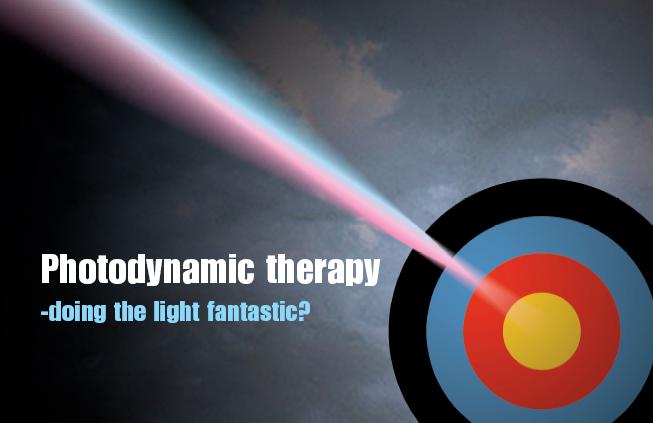 Photodynamic Therapy: was originally used mostly for palliative care reducing the symptoms of both the orthodox treatments and the cancer in later stages. It then moved on to being used with Barrett's and to shrink some blockages. Now several US centers are looking at its use as a basic treatment. It has few side effects and originally involved a chemical agent, which finds its way to the cancer. Then light of a certain frequency is shone on that agent to produce an oxygen free-radical which kills the cancer cell. For many years this treatment was hampered by the need for the tumour to be near the body surface in order to deliver the light. Recently there have been huge advances in the agents (many are now natural), lasers and delivery mechanisms, making the treatment increasingly effective for many cancers. Go to: Photodynamic Therapy or PDT.
Photodynamic Therapy: was originally used mostly for palliative care reducing the symptoms of both the orthodox treatments and the cancer in later stages. It then moved on to being used with Barrett's and to shrink some blockages. Now several US centers are looking at its use as a basic treatment. It has few side effects and originally involved a chemical agent, which finds its way to the cancer. Then light of a certain frequency is shone on that agent to produce an oxygen free-radical which kills the cancer cell. For many years this treatment was hampered by the need for the tumour to be near the body surface in order to deliver the light. Recently there have been huge advances in the agents (many are now natural), lasers and delivery mechanisms, making the treatment increasingly effective for many cancers. Go to: Photodynamic Therapy or PDT.
Treatment for anaemia: Anaemia can be common in esophageal cancer. Managing and counteracting anaemia can reduce death from anaemia by 50 per cent. Research published by the Cochrane Collaboration showed that epoetins (alfa and beta epoetin) show significant survival benefits. Particularly striking were the results for patients with solid tumours (Breast, lung, colon, ovarian, esophageal) where risk of death decreased by 51 per cent) In a second study (European Soc. For Medical Oncology- 31st Oct 2005) epotin beta was shown to reduce risk of tumour progression in patients with anaemia
Treatment for fatigue: icon has run several pieces on fatigue. A qualified naturopath will be able to suggest dietary changes to boost energy levels. Qualified homeopaths may be able to suggest ways to counter fatigue. Energy therapists (e.g. acupuncture, cranial osteopaths, Reiki Masters) may well be able to help. Italian research showed a lack of acetyl-carnitine which supplementation could correct. UCLA scientist report that a series of genetic markers become blocked either due to the cancer or due to the chemotherapy treatment. The California team note promising results with Etanercept. Apparently 30 per cent of women who have had chemo for breast cancer have long-term fatigue, even after the cancer has gone. This may well be true for other cancers.
The British Journal of Cancer 2006; 94 1568-71 reported on research from the Glasgow Royal infirmary. Apparently patients with higher levels of CRP protein pre-surgery have poorer survival outcomes. Donald Macmillan says it is indicative of higher levels of inflammation and an impaired T-lymphocyte response. The research implied that patients with high CRP levels should not undergo surgery.
Memorial Sloan Kettering was working on a new class of drugs that offered another promising avenue of investigation: Tyrosine-kinase inhibitors (such as SU5416 and OSI-774) are drugs involving small biologic molecules that directly attack tumour cells at the molecular level.
Complementary therapies for oesophageal cancer; Alternative therapies for oesophageal cancer
CANCERactive is Europe's Number 1 Integrative Cancer Charity. This Website alone has more than 4,000 pages of information on it, either as articles or as news stories. More than 10,000 people visit our websites every day. We know from the feed-back we receive just how much we are valued by people trying to beat cancer.
We believe you can increase your personal odds of cancer survival by taking simple health-enhancing steps and adding both complementary cancer therapies and alternative cancer therapies into your mix of treatments.
For example, Hyperbaric Oxygen, curcumin, calorie restriction, melatonin, probiotics and whole body hyperthermia have all been shown in research to make chemotherapy work better. It then kills more cells! The research is covered on this website. Surely it makes a lot of sense to use them in your personal cancer treatment programme?
Go to: How to improve your chemotherapy
We cover how to improve your radiotherapy (and reduce side-effects) too.
Go to: Improve your Radiotherapy, and reduce side-effects
We have a complete review of Immunotherapy telling you the accurate figures and what to watch out for. We tell you what is working and when two new drugs have been used, rather than one. Its a new, emerging and alternative cancer therapy, but not fully there yet!
Then we have an article on how to improve the success of your radiotherapy (and reduce the potential side-effects) – all by adding complementary therapies. Our Guidelines on Diet and Exercise can be found through this link:
Go to: CANCERactive Guidelines on Diet and exercise
Our recommended anti-cancer diet is the colourful Mediterranean Diet (with its focus on the French paradox):
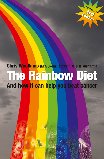
Go to: The Rainbow Diet
Like Hippocrates, we believe all cancer begins in the gut and that gut problems, yeast, viral and parasite infections are common constituents of cancer.
Go to: All cancer begins in the gut
But if you just want to look at the most comprehensive list of Complementary Therapies you can find it here:
Go to: CANCERactive Complementary and Integrative cancer therapies
And if you want alternative cancer therapies start here:
Go to: CANCERactive Alternative cancer therapies
Finally, if you want all this put together for you in one simple plan, why not look into having a Personal Prescription?
Go to: Personal Prescriptions with Chris Woollams
We don’t take one penny from any Pharmaceutical company, cancer clinic or supplements company. We have no vested interest. We just want to see you beat cancer.
"If you are already thinking of supplementing with any of the above products, why not take a look at Our Natural Selection by clicking here."

The CANCERactive Difference: Intelligent Information. Independent Voice.
Refs: 1. Sawada A, Fujiwara Y, Nagami Y, et al. Alteration of esophageal microbiome by antibiotic treatment does not affect incidence of rat esophageal adenocarcinoma. Dig Dis Sci. 2016;61:3161–8.
2. Blackett KL, Siddhi SS, Cleary S, et al. Oesophageal bacterial biofilm changes in gastro-oesophageal reflux disease, Barretts and oesophageal carcinoma: association or causality?Aliment Pharmacol Ther. 2013;37:1084–92.
return to the top
IMPORTANT INFORMATION
|
*Cancer (and its related illnesses) are very serious and very individual diseases. Readers must always consult directly with experts and specialists in the appropriate medical field before taking, or refraining from taking, any specific action.
This web site is intended to provide research-based information on cancer and its possible causes and therapies, so that you can make more informed decisions in consultation with those experts. Although our information comes from expert sources, and is most usually provided by Professors, scientists and Doctors, our easy-to-understand, jargon-free approach necessitates that journalists, not doctors, write the copy. For this reason, whilst the authors, management and staff of CANCERactive, icon, and Health Issues have made every effort to ensure its accuracy, we assume no responsibility for any error, any omission or any consequences of an error or omission. Readers must consult directly with their personal specialists and advisors, and we cannot be held responsible for any action, or inaction, taken by readers as a result of information contained on this web site, or in any of our publications. Any action taken or refrained from by a reader is taken entirely at the readers own instigation and, thus, own risk.
|
The CANCERactive Difference: Intelligent Information. Independent Voice.